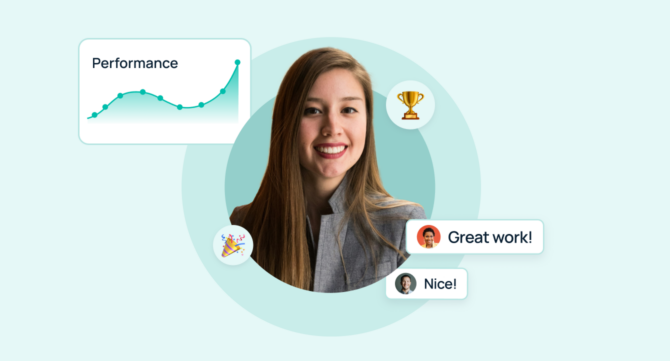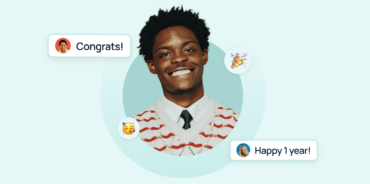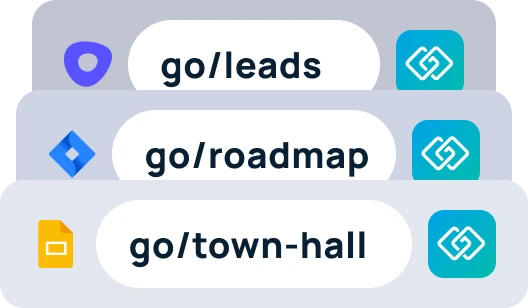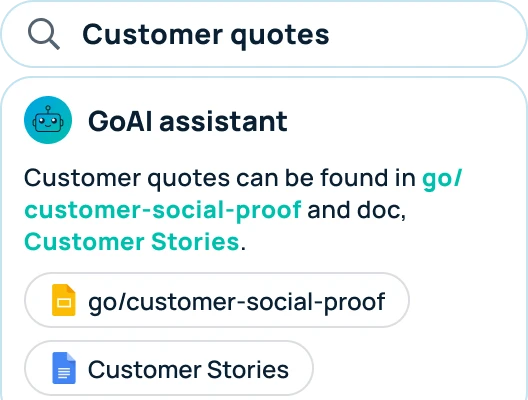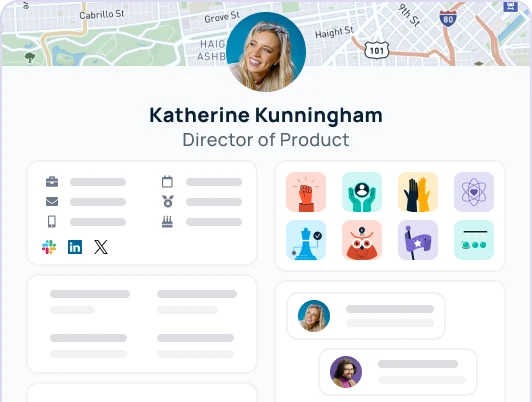Rewards and recognition programs motivate and engage employees by offering tangible benefits for outstanding performance.
Rewards and recognition programs are vital aspects of employee engagement. As human beings, we often seek out recognition, acknowledgment, and validation for our hard work.
In fact, one of the main reasons employees quit their jobs is lack of or insufficient recognition. These two programs motivate your team to achieve more while keeping them engaged.
Recognition and reward extend beyond monetary incentives. They involve consciously appreciating and recognizing employees’ work quality and commitment. It’s an impactful way of ensuring high morale and job satisfaction.
Let’s discuss rewards and recognition programs, their impact, and how to integrate them to ensure a highly engaged and productive team.
Theoretical framework
Rewards and recognition are incentives and positive feedback that appreciate and acknowledge employees for great performance. Both are important, as they boost motivation and morale, leading to higher productivity and performance. They aim to enhance engagement with work responsibilities while incentivizing performance.
Although both positively impact engagement and performance, they affect employee psychology differently.
Rewards are tangible items that benefit employees, such as gift cards, paid time off, and cash bonuses. Recognition is more subtle, as the benefit takes the form of public or private acknowledgment or praise for an employee’s achievements or work. Recognition is not transactional, like rewards, but rather relational. Unlike tangible rewards, recognition is not tangible.
Most organizations use tangible reward systems, but recognition can be more effective.
McKinsey’s research shows that non-financial incentives like leadership opportunities and praise are more motivational than financial incentives like cash rewards.
With that in mind, employees find different factors motivating in a diverse workforce. Recognition and rewards should go hand in hand as part of a unified strategy with multiple motivation sources.

Your rewards and recognition framework can include aspects such as:
- Recognition programs – You can have annual or monthly awards that offer recognition and rewards to team members who continuously excel at work
- Recognition awards—These can be trophies, plaques, and certificates that appreciate outstanding contributions to the business and exemplary performance.
- Public recognition—This may involve announcing exceptional achievements via the company’s social media pages, newsletters, and meetings.
- Non-monetary rewards – You can offer opportunities for career advancement or professional growth, flexible working hours, and extra time off
- Monetary rewards – These can be cash prizes, salary increments, and bonuses.
Ultimately, the goal is to appreciate and recognize your team’s contributions and hard work. Ensure you find rewards that your team will find valuable and meaningful.
The most vital thing to note is that your rewards and recognition strategy should align with the company’s values, culture, and goals. It would help if you also customize it to suit your team’s individual needs and preferences.
Impact of recognition programs
There’s a direct relationship between recognition, engagement, and job satisfaction.
Studies by Harvard Business Review show that recognizing team members enhances organizational and individual performance. Forbes also reports that employees would put in more effort if leaders acknowledged their hard work.
Recognition impacts engagement levels in different ways, including:
Higher productivity
Employee recognition increases engagement in your workforce. Employee engagement is crucial as it nurtures loyalty and teamwork, creating an empowered, result-oriented, vibrant team that can handle challenges effectively.
The underlying psychology is that your team may embrace behaviors you publicly appreciate and recognize. Continuous recognition of good performance is likely to boost productivity.
Positive workplace culture
Incorporating recognition into your company culture and basing the program on company values encourages adoption. When the recognition gifts align with the company culture, employees get incentives to embody the company values in their daily tasks.
Appreciating employees for behaving in ways that reflect your core principles also nudges everyone to embrace and understand the company culture. It results in a highly motivated team with a deeper connection to your business or company.
This positive energy will also spread to other team members, encouraging them to attain their goals.
Retention of top-performers
Recognition programs positively impact your recruitment, retention, and engagement efforts. They effectively lower employee turnover while enhancing job satisfaction. Leaders who appreciate and acknowledge their team’s contributions have higher chances of retaining them.
Official recognition supports the idea that each team member’s contribution is vital to achieving the overall goals. This motivates your team to perform their best and be proud of their work. It provides a sense of purpose that results in excellent performance, commitment, and loyalty.
Employers with such motivated teams appeal to industry leaders and top performers. Retaining top talent through recognition makes more financial sense than replacing them.
Impact of reward programs
Rewards can be intangible or tangible items you offer employees in return for significant work contributions. They can be anything your team considers to add positive value or meet certain needs.
When you reward team members for their achievements and hard work, they will likely be motivated to perform better. This results in increased productivity and engagement.
Better employee retention
What are HR leaders most concerned about in 2024? Retention.
People Managing People surveyed HR leaders and found that a majority sited retention as their top concern. Rewards programs can help you positively affect employee retention rates. They make team members feel appreciated, boosting motivation and satisfaction levels. This, in turn, leads to loyalty and commitment to your business. Your team will be less likely to seek employment opportunities in other places.
Higher morale
Rewards programs can enhance employee engagement by boosting morale. When your team feels rewarded and appreciated, they will demonstrate commitment to the business’s success. This high morale leads to better productivity, which helps to retain top-performing team members.

Integration of recognition and rewards
Most employees appreciate tangible rewards and financial benefits. However, finances alone are not enough to make the rewards memorable. Intangible rewards like public recognition from leaders create more memorable moments that are more meaningful than monetary rewards.
Instead of choosing one over the other, the best move is to integrate recognition and rewards thoughtfully into an all-rounded strategy. Both complement each other in different ways, such as:
- Rewards are standard and equalized, while recognition can take different forms to suit individual communication styles
- Rewards often involve finances, but recognition doesn’t always have a financial aspect or require significant monetary resources.
- Rewards encourage achievement, while recognition fosters continuous progress rather than results.
- Rewards involve individual incentives, but recognition can nurture a sense of teamwork and collaboration.
Integrating recognition and rewards creates an all-rounded and holistic work culture that prioritizes appreciation.
Challenges and solutions
Employee recognition and reward programs should engage, motivate, and award your team for exceptional contributions, achievements, and performance. However, these programs are not equal. Some may trigger resentment among team members or backfire.
You may also encounter other challenges due to factors such as:
Delays and infrequency
One major challenge with employee recognition programs is ensuring they are timely and frequent enough to positively impact your team’s retention rate, performance, and morale.
Having random or infrequent recognition and rewards programs can make your team feel forgotten, demotivated, and neglected. You can avoid this by adopting employee recognition programs’ best practices, like a timely and regular rewards system and rhythm.
Set up performance triggers, reminders, and calendars, encouraging immediate and peer-to-peer recognition.
Lack of consistency and clarity
Another major challenge facing recognition programs is ensuring the programs align with business values and goals. It’s also difficult to ensure they are consistent and clear.
If your rewards and recognition criteria are subjective or vague, your team may feel unfairly treated, frustrated, and confused. You can prevent this by clearly communicating and regularly defining expectations, objectives, and recognition standards. Implementing these programs transparently and consistently across departments and teams would be best while avoiding bias and favoritism.
Lack of sincerity and authenticity
Rewards and recognition programs can become obligatory, generic, and insincere over time. If your programs are not meaningful, specific, and genuine, your team may feel indifferent, distrustful, and cynical about them.
You can overcome this by ensuring your rewards programs are sincere and authentic. You’ll achieve this by expressing sincere gratitude and appreciation by highlighting particular outcomes and behaviors. It would help if you also link the recognition to the overall vision and mission.
One-size-fits-all approach
Another common challenge leaders face with recognition programs is assuming all team members have similar motivations, needs, and preferences. People attach different values to various forms of recognition, whether informal, formal, private, public, non-monetary, or monetary.
Plus, some team members have different expectations about recognition and personal or cultural sensitivities. The best way to overcome this challenge is to customize your recognition programs to meet the needs of your diverse workforce.
You can achieve this by personalizing recognition and reward messages, offering choices to your team, and administering surveys.
Inadequate feedback and measurement
Evaluating and measuring the impact and effectiveness of recognition and rewards programs is also a significant challenge. Failing to monitor and assess your programs makes it challenging to determine whether you’re getting the desired results and whether some areas need adjustment or improvement.
You can avoid this by outlining OKR (Objectives and key results) and KPIs (Key performance indicators) for your rewards programs. Start by gathering and evaluating data on relevant outcomes such as employee retention, productivity, engagement, satisfaction, and recognition frequency.
Seek feedback from your leaders and team on how to enhance recognition programs and act on it.
GoProfiles for employee recognition
GoProfiles, an AI-powered employee engagement platform, understands the significance of peer recognition and offers a solution through its Bravos feature.
Bravos are a game-changer in fostering a culture of appreciation within organizations. These badges of gratitude, seamlessly integrated with Slack, empower employees to publicly acknowledge and celebrate their peers’ contributions in real-time.
Not only do Bravos promote a sense of camaraderie and teamwork, but they also provide valuable insights into employee engagement and performance, serving as a powerful tool for performance evaluations and talent management.
By making recognition visible and inclusive, GoProfiles ensures that appreciation is not only timely but also meaningful, driving motivation, engagement, and ultimately, a thriving workplace environment.

About the guest author
Nisha Joseph, Content Manager at Profit.co
In her current role, she leads the content marketing team with experience in various fields, such as science, education, law, and management.
